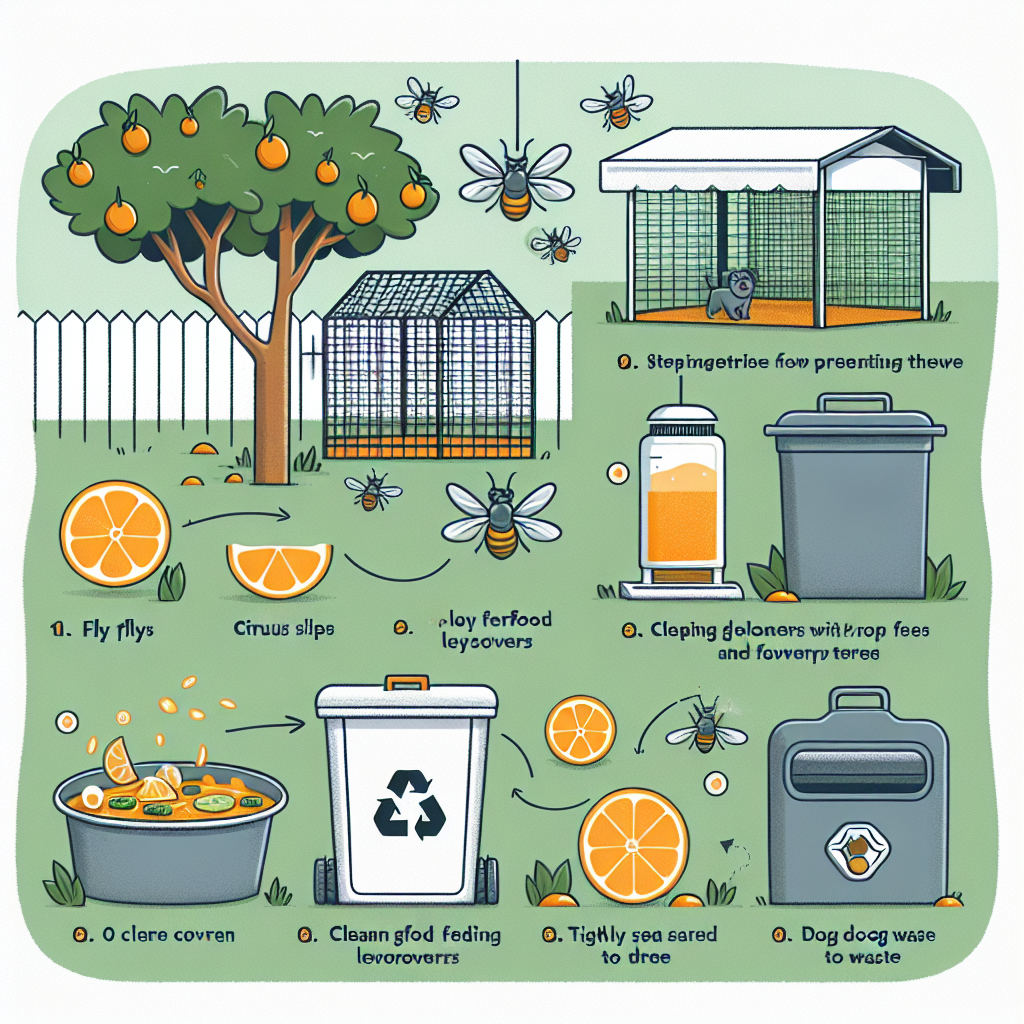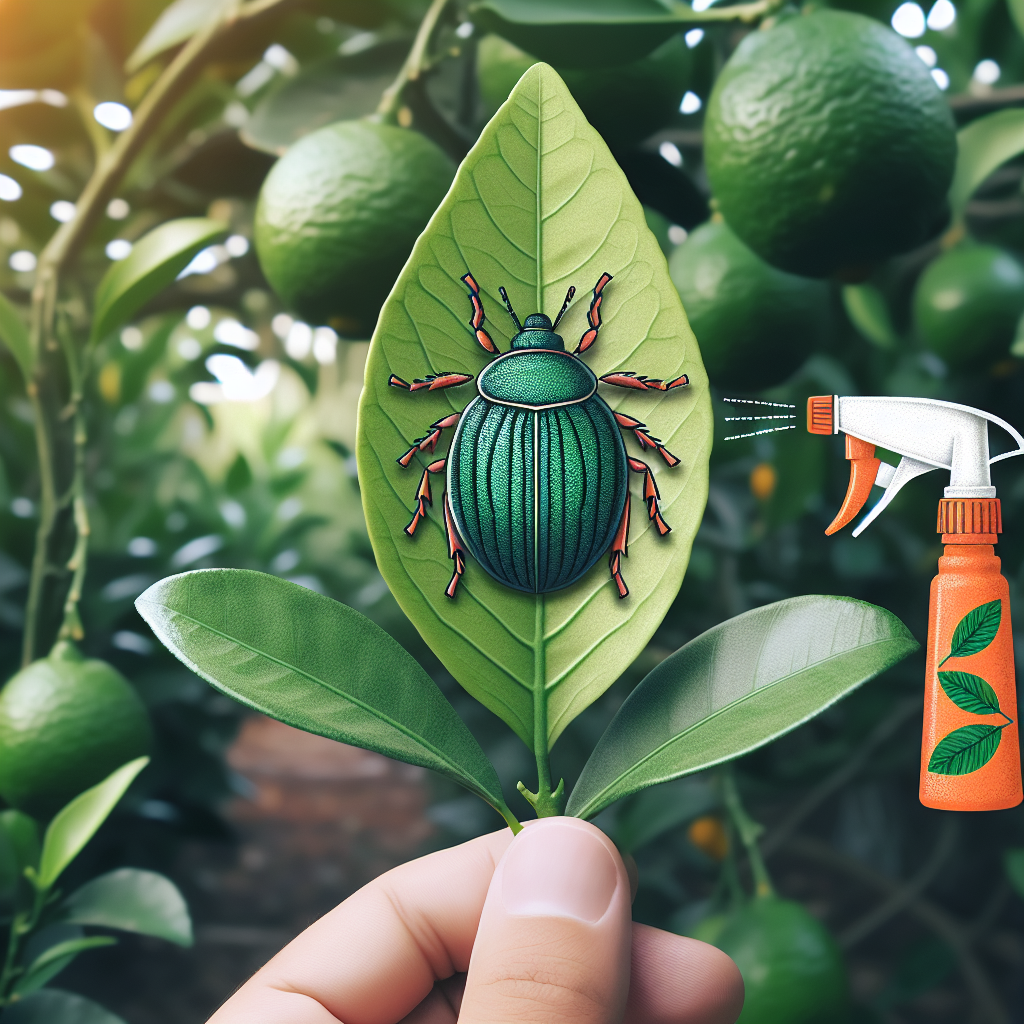How to Stop Flies from Infesting Dog Runs
Published April 4, 2024 at 8:20 am
Discover practical tips and strategies to prevent flies from taking over your dog’s outdoor space, ensuring a cleaner and more pleasant environment for your furry friend to play and relax.

Understanding the Importance of a Clean Dog Run
If you're facing challenges with flies around your dog's run area, you might be looking for effective strategies to keep these pests at bay. Having a clean and hygienic environment is crucial not just for your pet's health, but it also makes the space more enjoyable for you and your family.
While you may feel overwhelmed by the infestation, rest assured that there are proven methods to deter these unwelcome visitors. Let's dive into some comprehensive approaches to keeping your dog run free from flies.
Identifying the Types of Flies in Your Dog Run
Knowing the enemy is half the battle won. Household flies, like the common housefly or biting stable flies, are usually the culprits behind dog run infestations. Each type may require a slightly different approach, but the general principles of cleanliness and prevention apply to all.
Inspect your dog run to identify which flies are present. This knowledge will be beneficial when choosing the right products and methods to target the specific type of flies that are troubling your pet.
Maintaining Cleanliness to Deter Flies
The cornerstone of fly control in your dog run is consistent cleanliness. Flies are attracted to pet waste, leftover food, and standing water. Ensuring these items are promptly cleaned up will significantly reduce fly attraction to the area.
Regularly remove your dog's waste and consider installing a waste disposal system directly in the run. Keeping the grass trimmed and the area clear of debris will also eliminate potential breeding grounds for flies.
Effective Fly Repellants for Dog Runs
Fly repellents come in various forms, such as sprays, granules, and traps. Look for pet-friendly options that effectively keep flies away without harming your furry friend. Some repellant sprays, which contain natural ingredients like citronella, can be applied directly onto surfaces without posing a risk to your pet.
For an eco-friendly approach, consider adding plants around your dog run that naturally repel flies, such as lavender or marigolds. These serve as a dual function of beautifying the space and keeping pests away.
Utilizing Fly Traps Strategically
Fly traps are an excellent way to catch flies that have already encroached on your dog's space. There are various types, from electric zappers to sticky traps, so you might wonder which is best for your needs.
One highly reviewed option is the RESCUE! Outdoor Disposable Fly Trap, which attracts flies with a bait and traps them inside a bag. Users report this product to be highly effective in capturing large numbers of flies. These traps can be placed around the perimeter of your dog run, reducing the fly population without the use of chemicals near your pet.
Some of the pros of using fly traps like the RESCUE! system include:
- Non-toxic and safe to use around pets and children
- Easy to dispose of and replace
- Can be hung at a distance, keeping your dog run aesthetically pleasing
The cons might be:
- Traps will need regular replacement, especially in areas with high fly populations
- Can emit an unpleasant odor as flies decompose
Find This and More on Amazon
Choosing the Right Bedding Material
If your dog run has a bedding area, the material you choose can either attract or deter flies. Cedar chips are a popular choice as they naturally repel flies and other insects. It’s said that many dog owners find cedar chips effective in keeping the bedding area free of pests.
Just ensure your dog is not allergic to cedar as some canines might have a sensitivity to it. As a side note, cedar also helps neutralize odors, which contributes further to a cleaner-smelling run area.
Incorporating Natural Predators
A little-known method of controlling flies is to encourage their natural predators to inhabit the area near your dog run. Birds, bats, and certain species of wasps are known to prey on flies. By installing a bat house or bird feeders, you attract these beneficial creatures that will help manage the fly population.
It’s a symbiotic relationship where you provide a home for these predators while they assist in keeping the fly numbers down. This tactic will not only benefit your dog run but the local ecosystem as well.
Specific Treatments for Stubborn Infestations
If you have tried the above methods and still struggle with an overwhelming number of flies, it might be time to bring out the big guns. Insecticidal sprays and baits specifically designed for outdoor use can work wonders in these scenarios.
Brands like PetSafe and Victor offer outdoor fly control systems that are still safe for pets. When using chemical treatments, always follow the manufacturer’s instructions to the letter to ensure safety and effectiveness.
Preventative Measures for Long-Term Control
Beyond dealing with an existing problem, it’s crucial to take steps to prevent future infestations. Covering food and water bowls when not in use, maintaining a routine cleaning schedule, and inspecting your dog run regularly for potential fly breeding areas will go a long way in keeping flies at bay.
Moreover, consider seasonal treatments at the starting and ending of warm weather when flies are most active. This proactive approach can drastically reduce the chances of another fly infestation happening.
Integrating Dog Run Maintenance with Overall Pet Care
Taking care of your dog's run should be a part of the overall care you provide for your pet. Just like you would monitor a snake plant’s health, keeping an eye on your dog run’s condition is essential.
Regular vet visits for your dog, proper grooming, and a balanced diet all contribute to fewer health issues for your pet, and consequently, a cleaner dog run. Happy, healthy pets make for cleaner living spaces, for both them and you.
Getting Your Family Involved in Dog Run Cleanliness
Just as you might teach your children the importance of nurturing indoor plants, involving them in maintaining the dog run can be a great family activity. This not only helps distribute the workload but also instills a sense of responsibility in kids.
Delegate tasks such as picking up waste, refilling water bowls with fresh water, and checking for leftover food. Turn it into a fun and educational experience, explaining the importance of each task and how it contributes to a fly-free zone for the family pet.
Choosing Effective Sanitation Products
To maintain a clean dog run, effective sanitation products are essential. Look for cleaners that are specifically designed to break down pet waste and neutralize odors, as these are key in preventing flies from being attracted to the area.
Enzymatic cleaners are a popular choice among pet owners due to their ability to naturally break down waste without harming the environment or your pet. Nature’s Miracle is a brand that’s often recommended for its effectiveness in dealing with pet-related messes.
Using DIY Solutions for Fly Control
Sometimes, commercial products are not within reach, or you may prefer a more hands-on approach. In such cases, homemade fly repellents can be a handy alternative. A mixture of apple cider vinegar and dish soap in a shallow bowl can trap and kill flies effectively.
Another method is creating sugar water traps or using essential oils like eucalyptus, peppermint, and lemongrass that are known to repel flies. These natural remedies can be just as effective as store-bought solutions while being easy on the pocket.
The Role of Proper Nutrition in Reducing Flies
What your dog eats can also play a role in attracting or deterring flies. High-quality, easily digestible dog food will produce less odorous waste, making your dog’s run less appealing to flies. Cheap food that’s harder to digest can lead to more waste, which is a big attractant for all kinds of insects.
Furthermore, ensuring your dog finishes its meals and not leaving out food can reduce the chances of attracting flies looking for a quick snack. It’s a simple yet effective step towards fly control.
Utilizing Water Management Techniques
Keeping your dog run dry is just as important as keeping it clean. Flies are attracted to moisture, especially if it’s mixed with pet waste. Regularly draining any standing water can help minimize the risk of creating a breeding ground for flies.
It’s essential to address any drainage issues within the dog run. Proper sloping and installing drainage solutions can keep rainwater from pooling in certain areas, making it less hospitable for flies.
Exploring Non-Chemical Pest Control
For those looking to minimize their chemical footprint, there are numerous non-chemical pest control options. Diatomaceous earth, for instance, can be sprinkled around the dog run as it is a natural product that dehydrates and kills insects.
Non-toxic sticky ribbons or tape can also be strung near the dog run to catch flies without the use of chemicals. Both these methods are safe for use around pets and children while remaining environmentally friendly.
Understanding the Role of Hygiene in Disease Prevention
Flies aren’t just annoying; they can carry diseases that may affect your dog and your family. An immaculate dog run is your first defense against the spread of these diseases. Consistent hygiene practices prevent the spread of pathogens and eliminate the risk of illness.
Ensure your pet’s vaccination and deworming schedules are up to date, as these can also reduce the likelihood of disease transmission through flies. It’s a comprehensive approach to pet health that benefits everyone.
Innovating Dog Run Design for Easy Cleaning
If you are in the process of designing or updating your dog run, consider incorporating features that make it easier to clean and less attractive to flies. For instance, non-porous flooring like concrete can be easily hosed down and doesn’t present the same hiding spots for pests as dirt or grass.
Strategic placement of the dog run in a sunny area can also be beneficial, as flies tend to prefer shady, damp areas. Plus, the sun’s UV rays can act as a natural sanitizer, helping to keep the run clean and fly-free.
Reinforcing the Fly-Free Zone Through Training
Part of fly prevention could include training your dog to not contribute to the problem. Teaching them to eliminate in designated areas away from the main run can help concentrate waste management efforts and prevent the spread of flies.
Positive reinforcement techniques can be effective in guiding your dog’s behavior in this area. Rewarding them with treats or praise when they follow through can encourage cleanliness habits that contribute to a healthier run environment.
Summing Up Our Fly-Free Strategies
When we talk about strategies to stop flies from infesting dog runs, it’s clear that prevention is key. From cleanliness to non-toxic control methods, there’s a multitude of approaches that can work cohesively to maintain a healthy environment for your pet.
And remember, creating a fly-free zone doesn’t just benefit your dog, it enhances your overall living space, making it a more pleasant place to spend time. Implementing these tips can lead to a significant reduction in fly infestations, resulting in a happy home for both you and your four-legged friends, much like making sure your indoor plants thrive brings a sense of tranquility and accomplishment. Enjoy the journey towards a cleaner, pest-free dog run.
Consulting Experts and Continuous Learning
Dealing with fly infestations in dog runs can be challenging, but it’s always helpful to consult with experts. Veterinarians and entomologists can offer valuable advice on safe and effective pest control practices specific to your region and situation.
Continuously educating yourself on the latest pest control techniques can also help in the battle against flies. Knowledge is a powerful tool in ensuring the health and comfort of your dog and family.
Collaborating with Neighbors for Area-Wide Control
Flies know no boundaries, so it’s beneficial to work with neighbors who may also have pets and face similar issues. By tackling the fly population on a larger scale, you can create a more substantial impact on the local fly ecosystem.
Discussing and sharing successful strategies for fly control can help create a community-driven effort to create a healthier environment for everyone’s pets.
Seasonal Adjustments to Fly Control Methods
Seasonal changes can have a significant impact on fly populations. In the warmer months, flies are more active and breed faster, so you might need to ramp up your control methods during these times.
As the weather cools, taking stock of what worked and what didn’t will prepare you for the next season. Adjusting your strategies with the seasons will ensure year-round protection for your dog run.
Incorporating Technology in Fly Control
Technological advancements have led to smarter solutions for controlling flies. Devices that use ultraviolet light to attract and eliminate flies can be used effectively in conjunction with your other fly control methods.
Investing in gadgets such as smart traps, which send you updates on their fly-catching efficiency, can provide you with real-time data to monitor and adjust your pest control strategy.
Monitoring and Recording Your Fly Control Progress
Maintaining a log of your fly control efforts can provide insightful data on what’s working for your dog run. Recording the methods you’ve tried, the frequency of cleaning and treatments, and the resultant changes in fly activity can serve as a guide for future actions.
By tracking your progress, you can more accurately pinpoint effective solutions and quickly adapt to changing conditions.
Re-evaluating Your Dog Run’s Location
Sometimes, despite all efforts, a dog run’s location might be the prime factor contributing to fly infestations. Assessment of the run’s proximity to compost piles, garbage bins, or other fly-attracting features may be necessary.
Relocating the dog run to a less fly-prone area of your yard could significantly reduce infestation issues, leading to a more manageable and enjoyable pet area.
Building a Support System for Consistent Upkeep
Consistency is vital in maintaining a fly-free zone. Building a support system, whether family, friends, or professional pet caretakers, ensures that your dog run remains clean and monitored, even when you’re not available.
Having a reliable plan in place for times when you’re away can prevent lapses in your fly control regimen and avoid setbacks in your pest management efforts.
Adopting Integrated Pest Management Strategies
Integrated Pest Management (IPM) is a comprehensive approach combining several methods to manage pests in an environmentally sensitive, effective, and sustainable manner.
Adopting an IPM strategy for your dog run can incorporate natural deterrents, habitat manipulation, good sanitation practices, and occasional use of chemicals as a last resort, providing a more holistic approach to controlling flies.
Staying Informed About New Products and Methods
The market for pest control is constantly evolving, with new products and methodologies being developed regularly. It pays to stay informed about the latest innovations that can provide novel solutions to the persistent issue of flies in dog runs.
Whether it’s a new kind of non-toxic repellent or a trap design that promises improved efficiency, being knowledgeable about these developments can give you an edge in maintaining a fly-free environment.
Considering the Impact of Climate Change
Climate patterns affect pest populations, and with changing climates, you may notice variations in fly infestations. Being mindful of these changes and adapting your pest control strategies to account for warmer winters or longer summers can help in your ongoing battle against flies.
Attention to detail and willingness to adapt are essential as you continue to protect your dog run from unwanted pests in the face of a changing environment.
Conclusion
As we’ve explored extensive measures to stop flies from infesting dog runs, it’s evident that a strategic blend of maintenance, natural repellents, innovative products, and community efforts can greatly reduce and manage fly populations. Your endeavor to create a clean, healthy environment for your pet doesn’t go unnoticed—it’s a testament to your dedication as a pet owner.
Your dog’s well-being is inherently linked to the condition of its living space, so the effort you invest in maintaining a fly-free dog run not only ensures a happier pet but also a more enjoyable outdoor experience for you. So, gear up and say goodbye to flies, and hello to more playful days with your furry best friend in a clean, secure, and healthy dog run, just like the joy you get from seeing your peace lilies purify the air indoors. With the right tools, knowledge, and support, you can triumph in the quest for a pest-free outdoor space.
Shop more on Amazon
Flowers & Plants Team
Flowers & Plants Team


